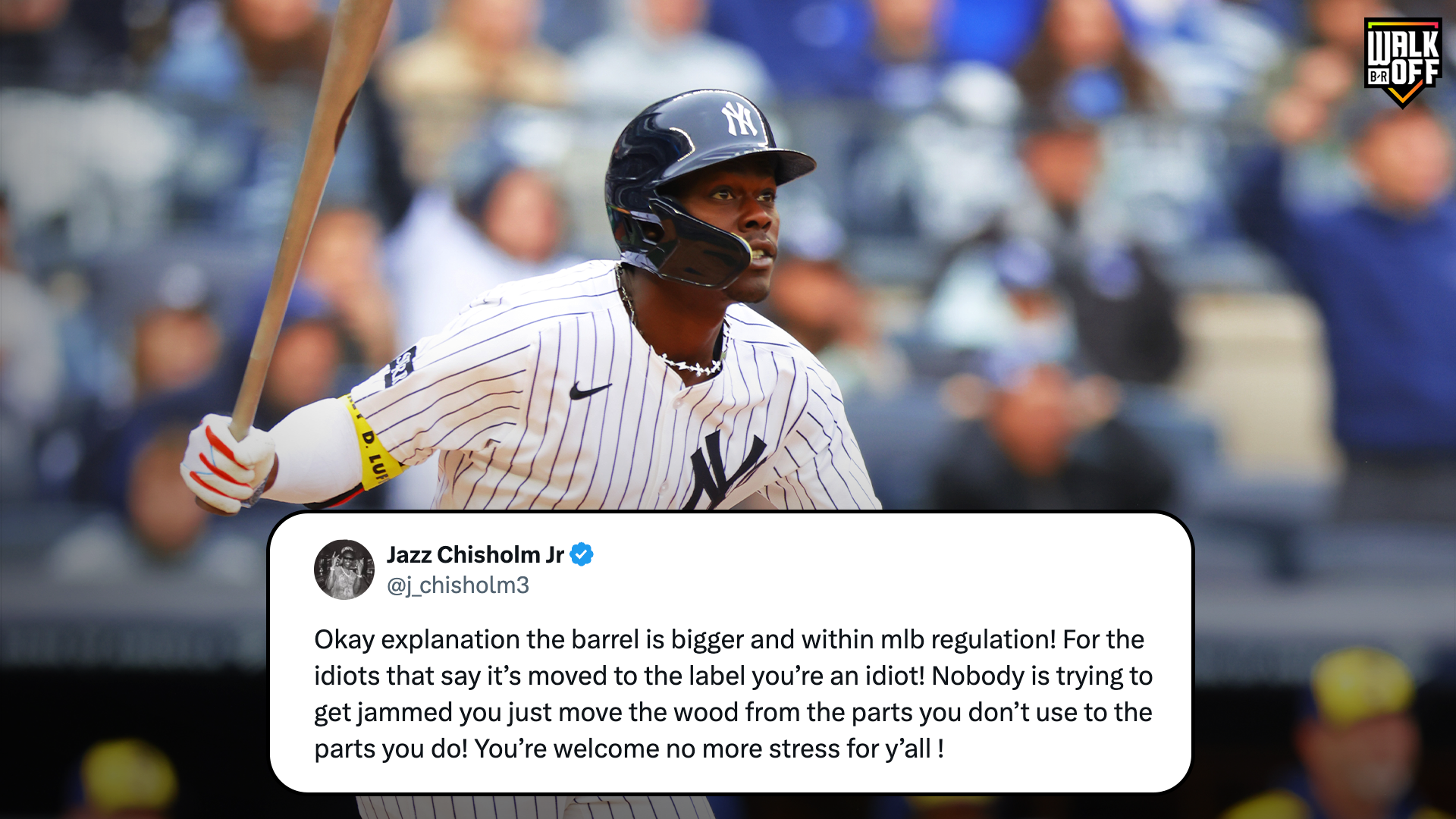How Yankees' 'Torpedo' Bats Were Created, Introduced to MLB Revealed by Jeff Passan

The New York Yankees' power surge over their season-opening series against the Milwaukee Brewers this past weekend generated significant attention for their new "torpedo" bats.
ESPN's Jeff Passan detailed how the bats were created and introduced in the majors, revealing that minor league hitting coordinator Aaron Leanhardt developed a way to increase the size of the barrel of the bat without increasing the weight.
Leanhardt, who was also an MIT-educated physics professor at the University of Michigan for seven years, first explored the idea after inquiring with players about how hitters can keep up with the pitching revolution in MLB.
"Players were frustrated by the fact that pitching had gotten so good," Leanhardt said.
In creating the "torpedo" bat, also known as the bowling pin bat, the weight of the wood was redistributed "from the end of the bat toward the area [six] to [seven] inches below its tip, where major league players typically strike the ball," per Passan.
The bats were spotlighted this past weekend after the Yankees tied an MLB record with 15 home runs through their first three games. Five players who adopted the "torpedo" bats were responsible for nine of those homers: Jazz Chisholm Jr. (three), Anthony Volpe (two), Austin Wells (two), Cody Bellinger (one) and Paul Goldschmidt (one). While there have been a growing number of critics, Yankees players stand by the legality of the new bats.
While the bats are only now drawing attention, Passan noted that Yankees slugger Giancarlo Stanton was the first to embrace the bat during the 2024 season, and it helped him hit seven home runs in 14 postseason games before the Yankees lost to the Los Angeles Dodgers in the World Series.









